Exercise
Get Started on Your Fitness Program
What solves many health problems is a diet heavy in vegetables, fruits and lean meats, plus daily exercise. Not everyone has time or the desire to lift weights or to run for two hours per day, but walking and lifting light weights is usually managed by everyone. Some activists argue that we should only perform “traditional” exercise. But it is not always possible to garden, hunt, gather, play stickball or to run. Going to the gym may be distasteful to purist traditionalists, but in modern times we often have no choice.
You must chose an activity that you like and look forward to; if it feels like a chore, then try something else: swimming, basketball, softball (you get the benefits from training, mainly), bicycling.
Weight lifting builds muscle and muscle burns more energy than fat, even at rest. So the more weight-resistant exercise you do, the more calories your body will burn at rest.
A return to playing stickball on a regular basis and practicing enough to keep us strong and our body fat low is another. It can be done; my son and I not only try and practice tossing and catching in our yard, we always take our sticks to gym and use the racket ball courts to throw against the wall. While this isn’t exactly the traditional way to play, it does give is the opportunity to work on skills and hand-eye coordination. This, in combination with running and lifting weights is an effective workout.
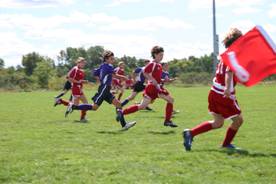
Children Playing Soccer
Include your friends and family in your fitness plans. Learn to play stickball and invite friends to join in weekly games. Start a walking group with your friends or neighbors. Go to the YMCA, walk around a mall, or look for aerobic classes in your town and take a friend for motivation.
Learn to swim like your ancestors. Hundreds of thousands of Natives lived by the coast, rivers and lakes and there is no doubt that swimming was part of their lifestyle. As artist George Catlin observed of many tribes in the early nineteenth century, “The art of swimming is known to all the American Indians; and perhaps no people on earth have taken more pains to learn it, nor any who turn it to better account. There certainly are no people whose avocations of life more often call for the use of their limbs in this way; as many of the tribes spend their lives on the shores of our vast lakes and rivers, paddling about liorn their childhood in their fragile bark canoes, which are liable to continual accidents, which often throw the Indian upon His natural resources for the preservation of his life.”
Learn to canoe like our ancestors. Tribes people who lived near water not only swam, they also canoed. While your ancestors may have used canoes they made themselves from trees, you can purchase metal or fiberglass canoes to save you the backbreaking trouble (or, satisfying work, depending on how you look at it). I learned to manage a canoe at age 8 and get into one whenever I can. Your local Red Cross might offer canoeing courses that teach you all the basics of canoeing. The beauty of canoeing is that it is like riding a bike—you never forget how. Canoeing can be strenuous and even dangerous depending on the water you choose, but in calm water even little children can help you along. As they grow older, their strokes become more powerful. Invest in a canoe and you can take it on trips to lakes, rivers, steams and ponds.
Run like your ancestors.
TOP OF PAGEHow do you start running?
Your ancestors often ran barefoot without running shoes, Gore Tex, socks, fanny packs that hold c.d.s, etc. So, there is no reason for you to avoid giving it a try. And if you cannot run, then walk. The cost of running is less than most sports. You will need to invest in a good pair of running shoes that will accommodate your feet (high or low arches, pronation, suppanation), body type (weight, knee condition), type of activity (racing, walking, cross training), running surface (street, trail). Socks are also important; if you use thin socks you will get blisters and stinky feet. Buy thick socks (such as Thorlos) that will protect your skin and absorb perspiration.
Walk first. Start with 15 minute walks every day for a week and work up to 30 minutes. Once you are comfortable with a fast walk and your doctor says you are healthy enough for more rigorous exercise, then try slow jogs. Walk when you are winded, then jog again after you recover. Don’t go too fast or far the first few months. Thirty to forty five minutes four times a week is an adequate regimen. Once you feel comfortable, then extend your outings by 15 minutes.
Take water with you. “Tough” coaches used to go by the adage of withholding water from their athletes in hopes that they would become stronger; but, this is a tactic that is proven to be physically damaging. You must stay hydrated on walks and runs, so take a bottle with you and drink every twenty minutes. Then drink another glass when you get home. When you become thirsty, you are becoming dehydrated.
Buy a small fanny pack that will hold a water bottle. You can also clip your cell phone and mace to the waist band and store lip balm, sunscreen, money, Kleenex and other sundries in the pockets. I have numerous fanny packs for every outing: a light one for short runs that holds just the above; another one a bit larger for longer hikes and runs in the mountains where I might need more water, an extra pair of socks, knife, food, band aids, etc.; and a larger shoulder pack for all-day outings.
Buy a hat or visor and sunglasses and wear them for sun protection.
Many new mothers find it difficult to find time or energy to exercise. Modern Natives don’t garden or gather food, much less take their kids along which makes them even stronger for the effort. Try what I did with both my children: I bought a baby jogger (not a cheap stroller that cannot withstand much use; even my joggers with shocks wore out after a year) and went out for 6-miles walks until my body was ready to run and we went out every day. You don’t have to go as far, of course, but I’ve been a runner for over thirty years. I took along diapers, bottles and sunscreen (get a jogger with a shade) and a fanny pack to carry water, Kleenex, money for stopping at garage sales, and extra clothes in cold weather. Both my kids basically grew up in the joggers; along the way they learned about trees, birds, squirrels and once we moved into the woods they got to see deer, elk, porcupines and hawks.
TOP OF PAGEFitness and your Children:
When your children are old enough to walk distances, take them with you. Even if they are so small they can only manage ½ a block, take them, then drop them off at home (with a sitter, of course) and you continue your walk or run. Take them swimming, teach them how to shoot hoops and to throw and catch. Organize games for the children in your area so they all can be active.
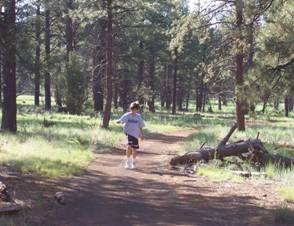
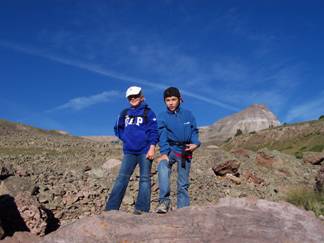
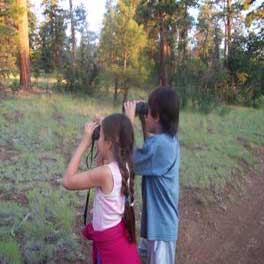
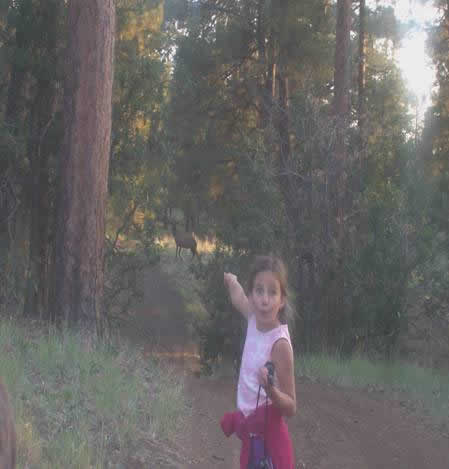
Volunteer to be a coach when soccer, basketball, cross country season comes around. Add a few more workouts and tell them about healthy eating. Tell parents that no junk food is allowed as after-game snacks.
Have your children play sports. Focus on them learning the game(s), not on winning. A child who starts a sport early learns valuable lessons they will carry with them the rest of their lives: what it takes to become fit; how to maintain that fitness and skill level; that achieving something takes work and perseverance; proper eating enhances physical performance; it is easier to maintain fitness than it is to stop being active then to try and regain that after a period of inactivity and poor eating habits. My children started playing basketball and soccer on formal teams at age four for fun and fitness. They also hike extensively and run. My daughter was able to hike 8 miles for three days straight at Zion National Monument when she was six and my ten-year-old son does 20 [fairly decent] push-ups at a time. Children will do these things willingly, especially if they see you doing them.
For students, completing a degree can be stressful. Studying for exams, keeping up with readings and assignment deadlines is difficult enough without the student having to also face racism and prejudice. Indigenous students, along with other marginalized students often are emotionally charged just by being on campus. Having to travel to keep up with community duties and ceremonies, dealing with family responsibilities and worrying about finances can be overwhelming. Many people turn to alcohol or drugs to relax, while others watch movies or try and forget the daily drudge by sleeping. According to the NAU Native American Student Services office that deals with Native drop-outs, many students simply stop going to class or “stop –out,” that is, when the going gets tough they leave school and return when they feel like it. How is it that Native academics can combat this stress?
One’s attitude can improve almost immediately by walking to classes instead of driving or taking the bus, foregoing processed, fried and fatty foods in favor of fruits, vegetables and lean meats, and stopping bad habits such as smoking and drinking. Not only is one’s physical state improved, but just by making the changes is greatly empowering and can inspire one to face the challenges thrown at them in school. But one can take those strategies a few steps farther. Along with proper diet, students can find easy ways to exercise by focusing on other things. For example, buy an animal tracks book, in addition to small pocket guides to insects, trees, clouds etc and make a point to take several times week to visit trails and try to identity what you see. Taking plenty of water and food, plus clothes depending on the weather and you can stay outside for hours not only walking and exercising, but learning bout the natural world at the same time.
George Catlin, Letter #13 of Letters and Manners, at http://www.xmission.com/~drudy/mtman/html/catlin/letter13.html
Taken from Devon A. Mihesuah, Recovering Our Ancestors’ Gardens: Indigenous Recipes and Guide to Diet and Fitness (Lincoln: University of Nebraska Press, 2005), pp. 94-98.
TOP OF PAGEExercise
A Run in Baldwin City
History of Indigenous Activity
Calorie Needs
Get Started on Your Fitness Program
Diet Charts for One Week